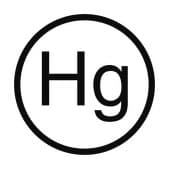A6656
Anti-Human IgG (γ-chain specific)−Agarose antibody produced in goat
IgG fraction of antiserum, saline suspension
About This Item
Origine biologica
goat
Coniugato
agarose conjugate
Forma dell’anticorpo
IgG fraction of antiserum
Tipo di anticorpo
secondary antibodies
Clone
polyclonal
Stato
saline suspension
Reattività contro le specie
human
Grado di funzionalizzazione
≥5 mg per mL
tecniche
Ouchterlony double diffusion: suitable
Capacità
0.6 mg/mL binding capacity
Temperatura di conservazione
2-8°C
modifica post-traduzionali bersaglio
unmodified
Descrizione generale
Goat anti-human IgG (γ-chain specific)-agarose antibody is specific for human IgG when tested against purified human IgA, IgG, IgM, Bence Jones kappa, and Bence Jones lambda myeloma proteins.
Immunogeno
Applicazioni
Stato fisico
Esclusione di responsabilità

Non trovi il prodotto giusto?
Prova il nostro Motore di ricerca dei prodotti.
Codice della classe di stoccaggio
12 - Non Combustible Liquids
Classe di pericolosità dell'acqua (WGK)
WGK 3
Punto d’infiammabilità (°F)
Not applicable
Punto d’infiammabilità (°C)
Not applicable
Elenchi normativi
Forniamo informazioni su eventuali restrizioni prevalentemente per i prodotti chimici. Per altre tipologie di prodotto siamo in grado di fornire soltanto informazioni limitate. Nessuna segnalazione significa che nessuno dei componenti è citato in un elenco. È dovere dell’utilizzatore assicurarsi che il prodotto venga impiegato in maniera sicura e a norme di legge.
EU REACH Annex XVII (Restriction List)
Scegli una delle versioni più recenti:
Possiedi già questo prodotto?
I documenti relativi ai prodotti acquistati recentemente sono disponibili nell’Archivio dei documenti.
Il team dei nostri ricercatori vanta grande esperienza in tutte le aree della ricerca quali Life Science, scienza dei materiali, sintesi chimica, cromatografia, discipline analitiche, ecc..
Contatta l'Assistenza Tecnica.